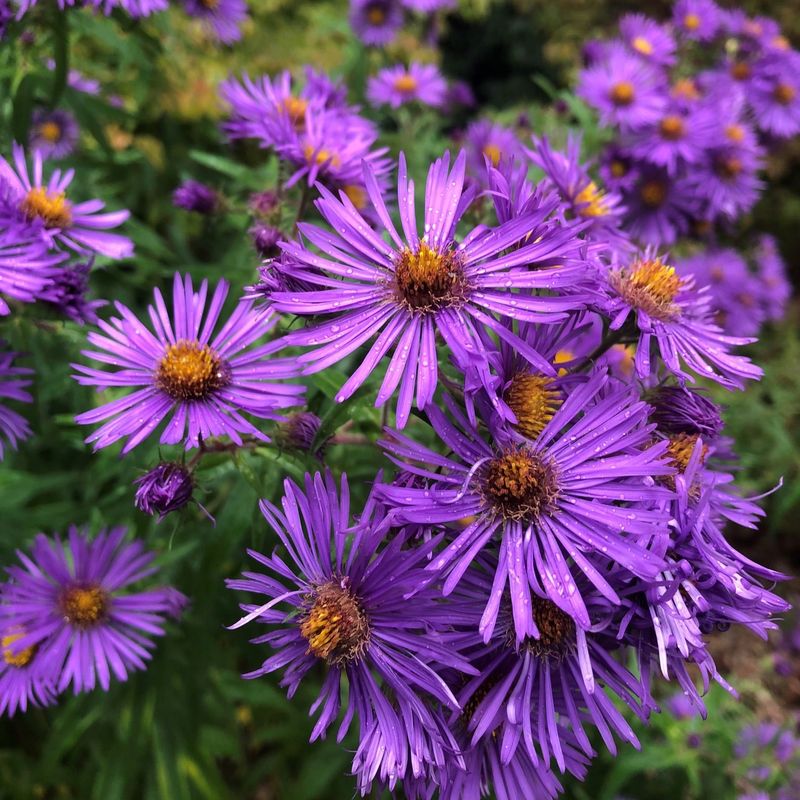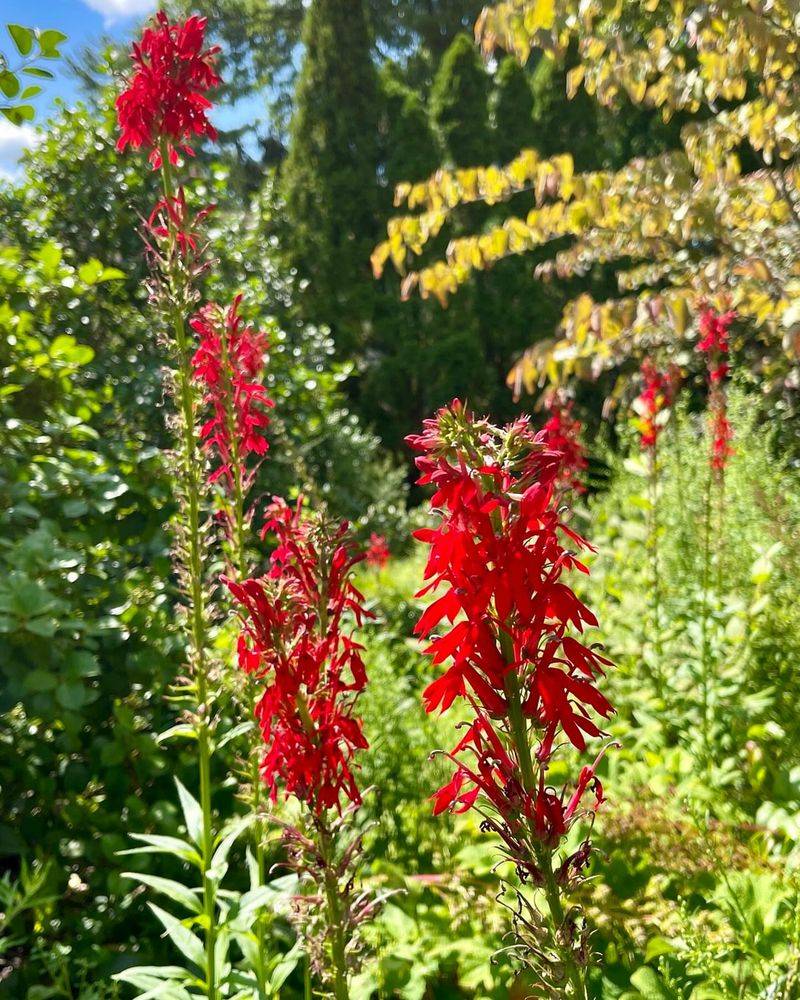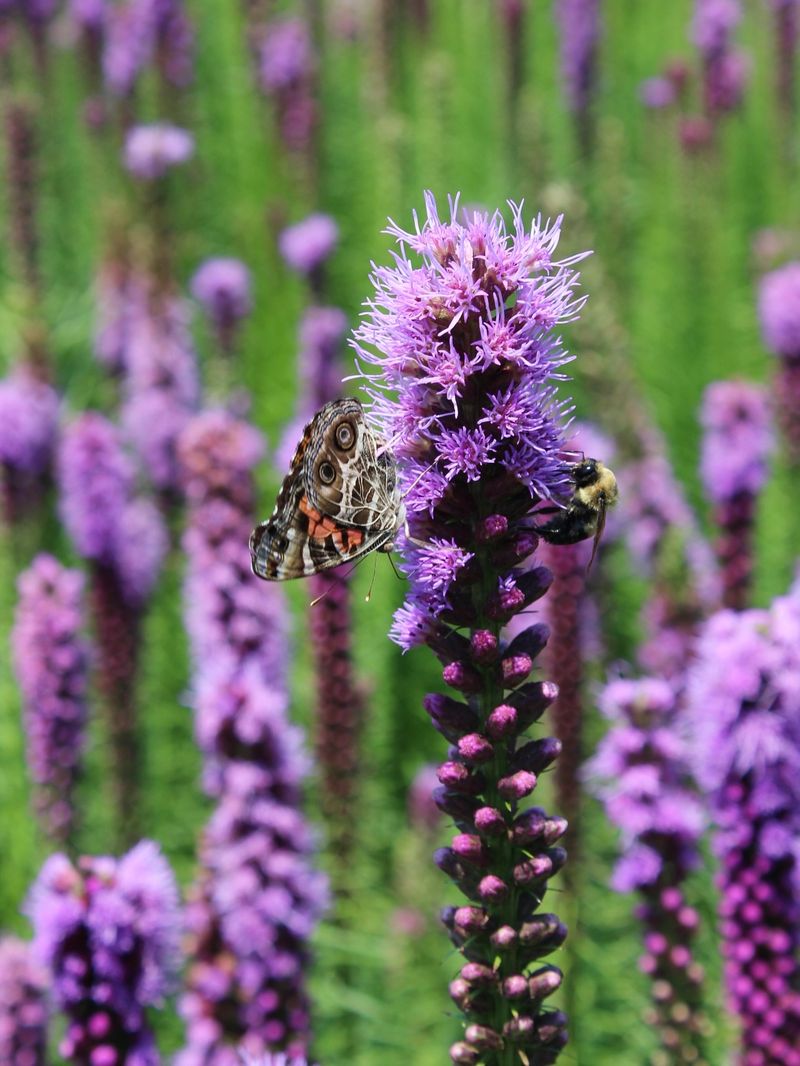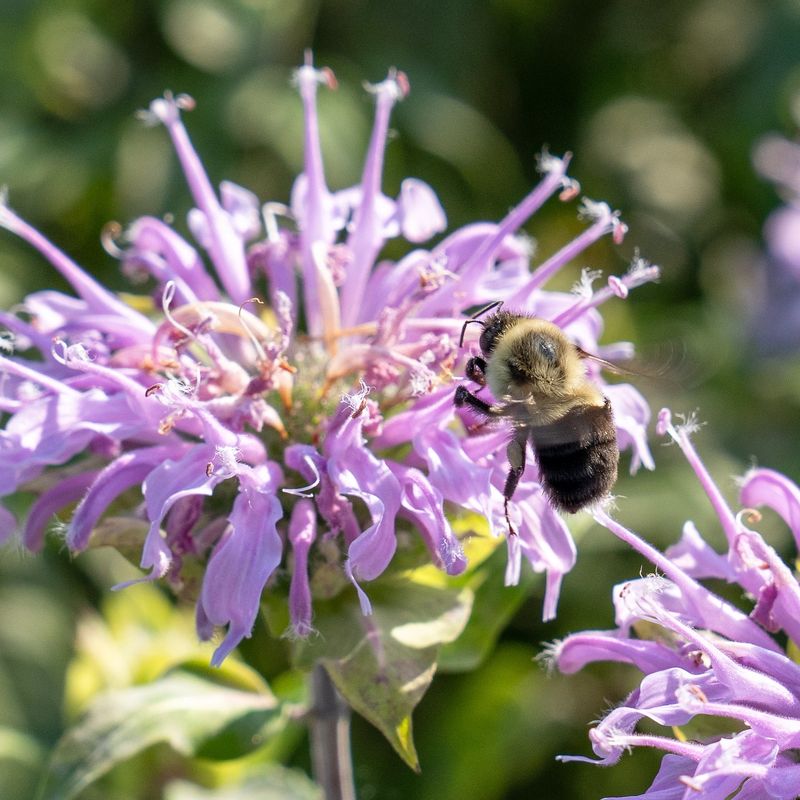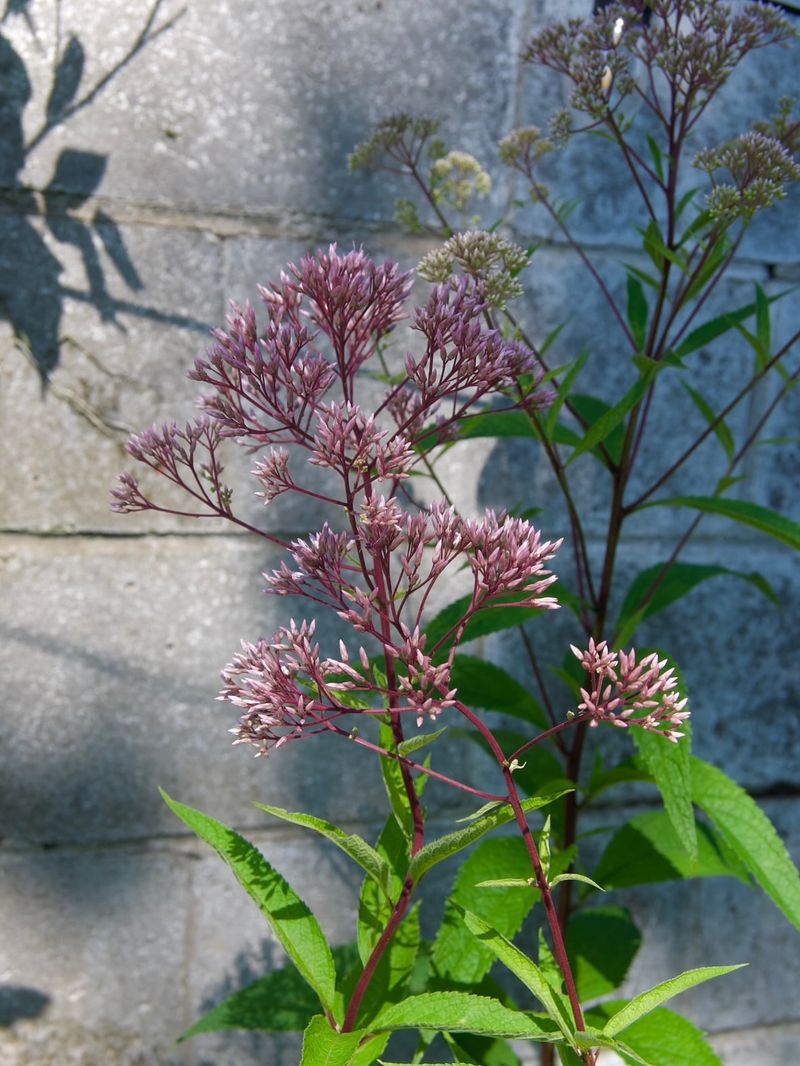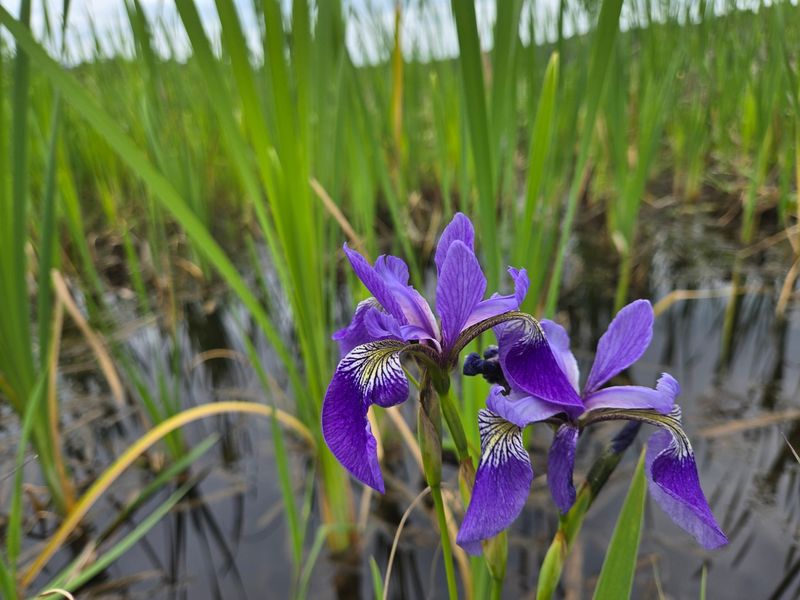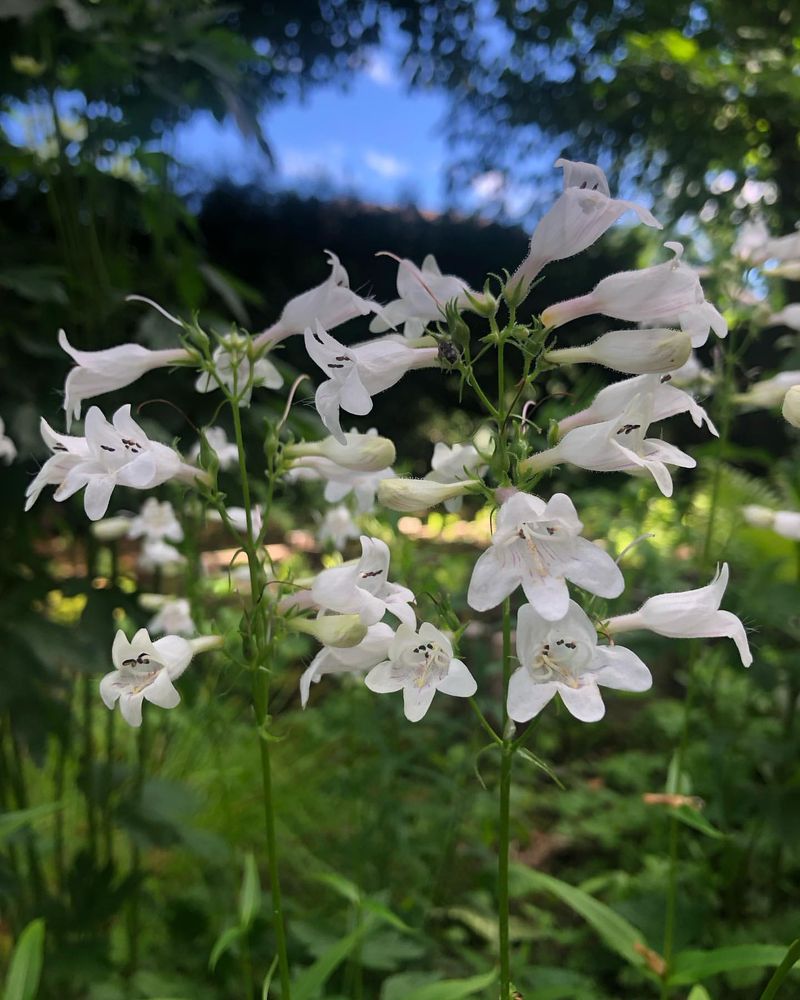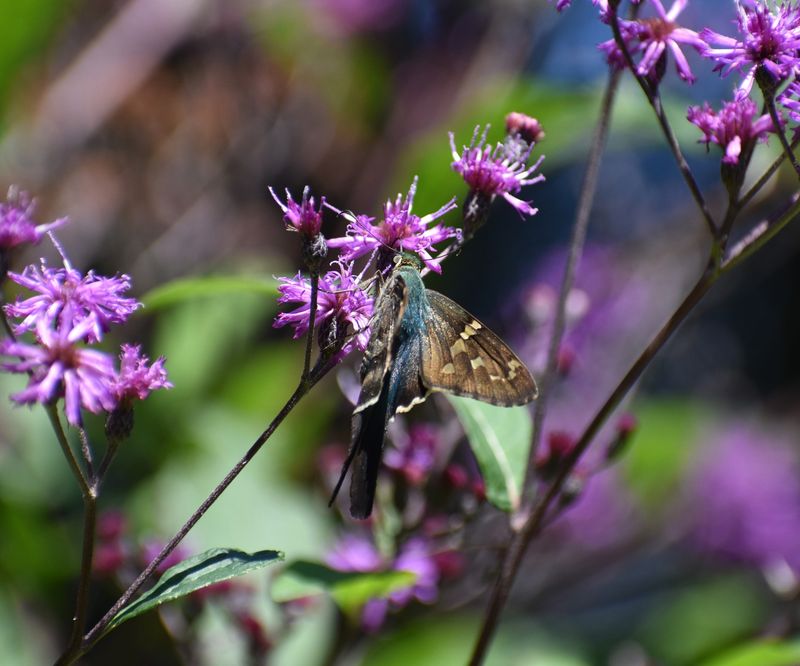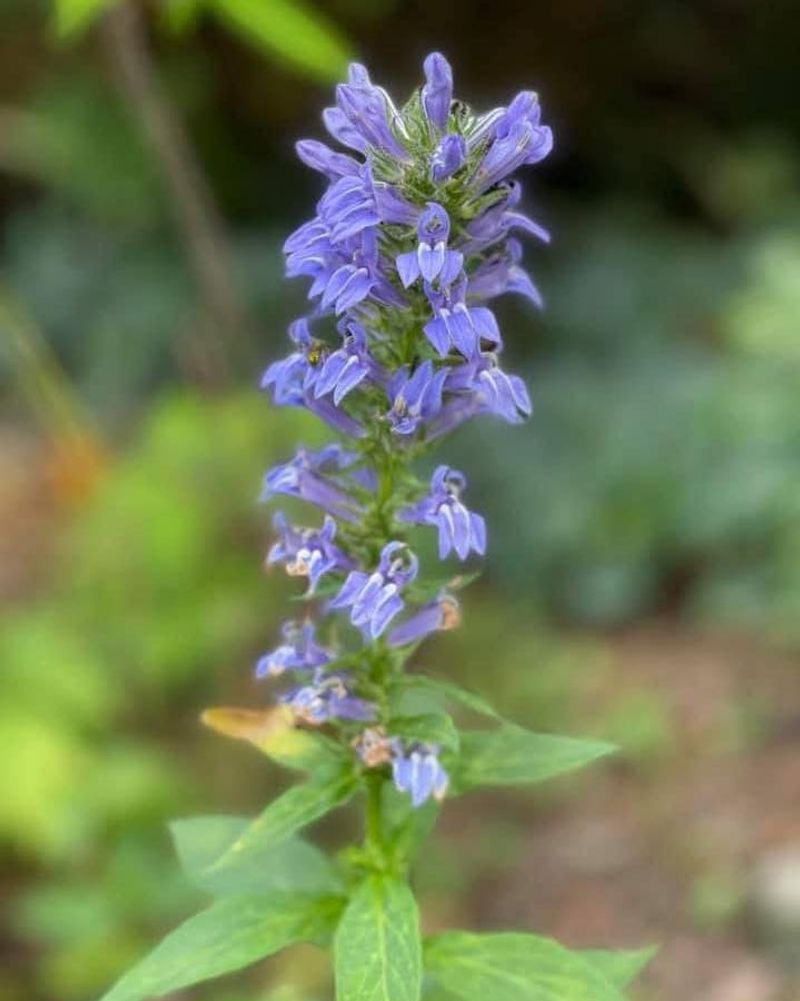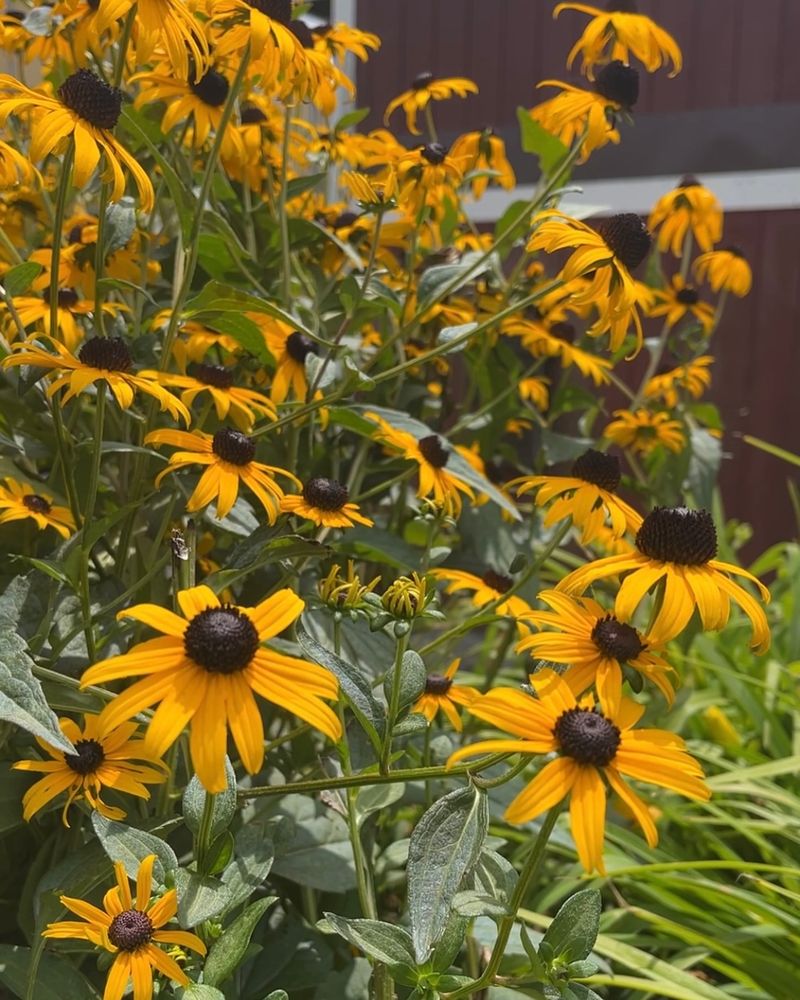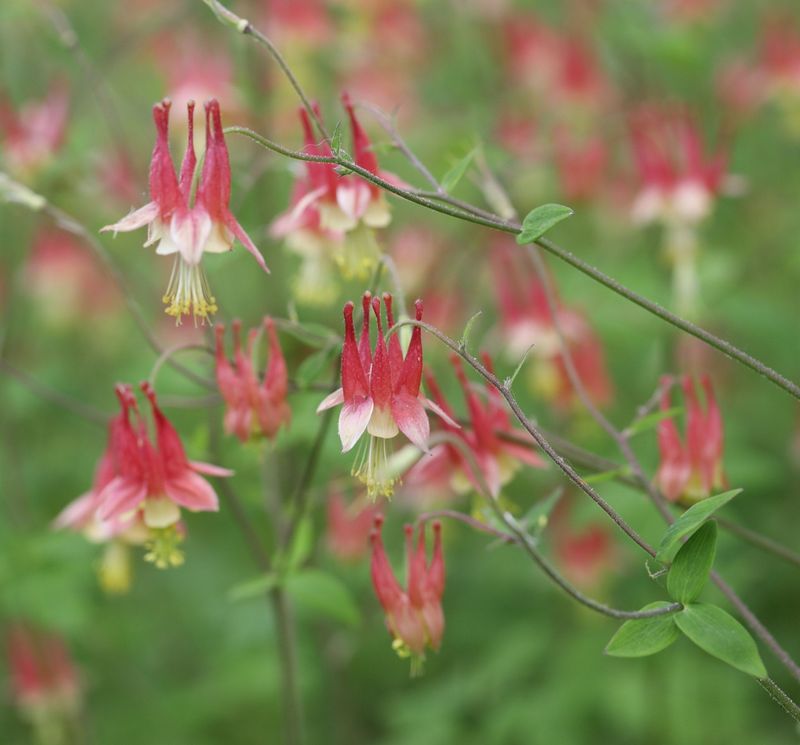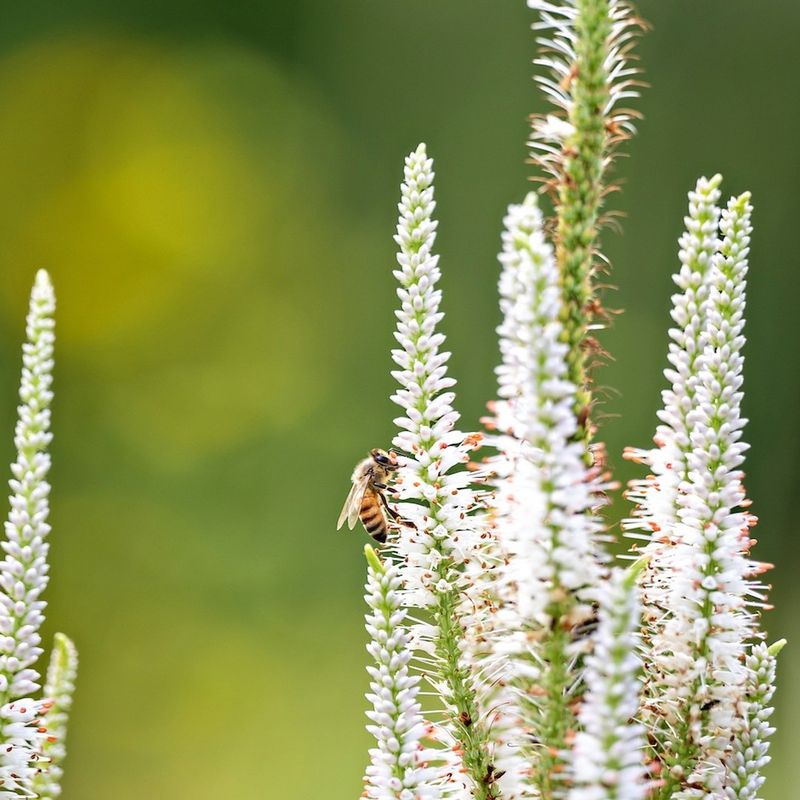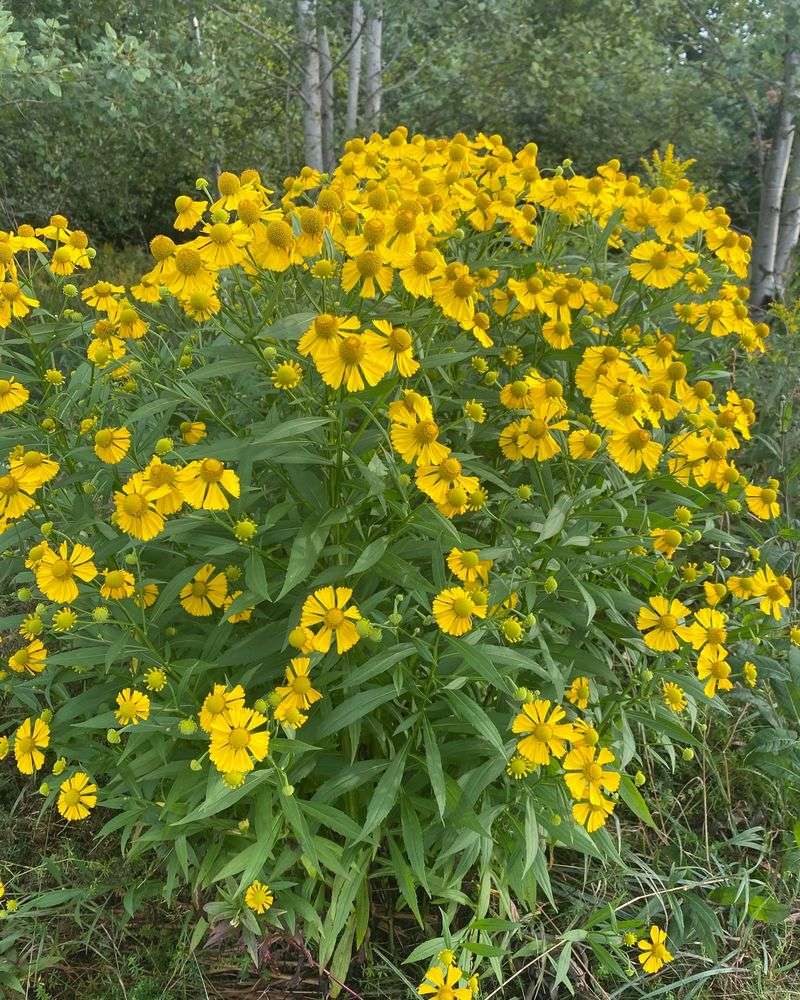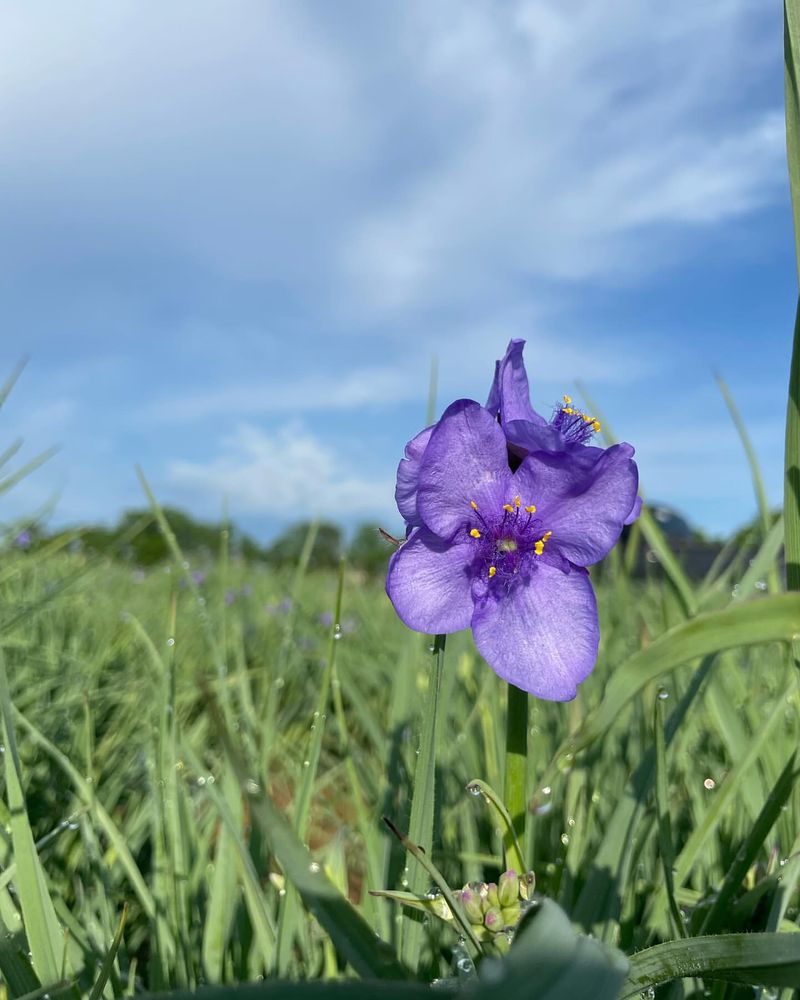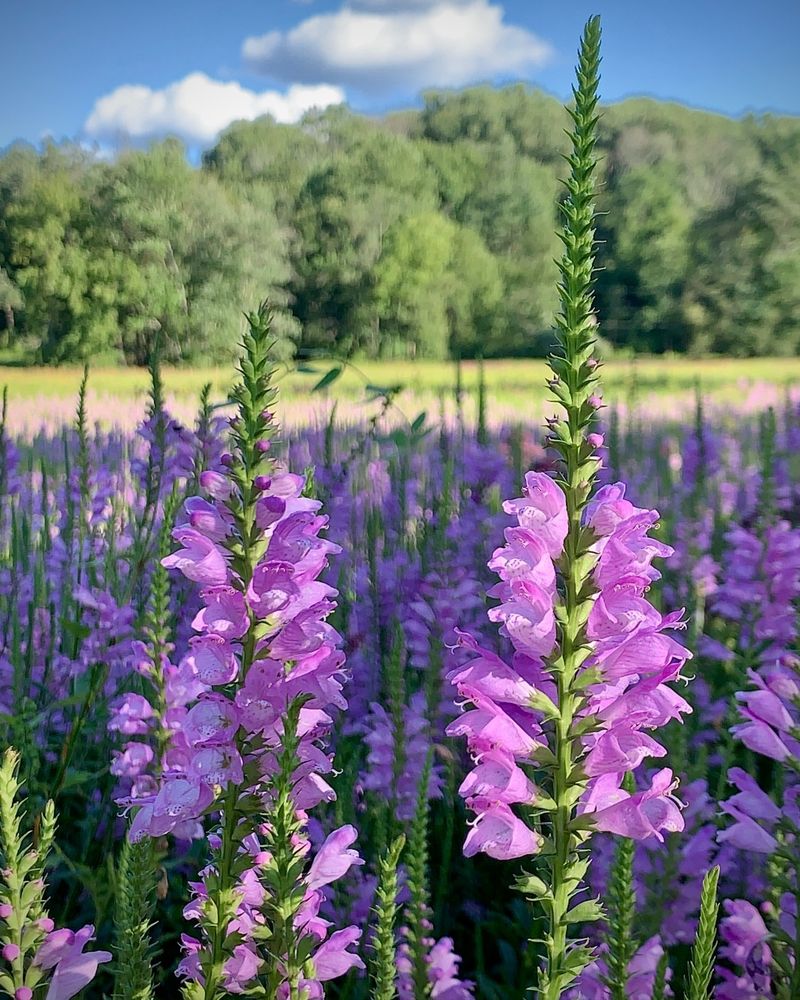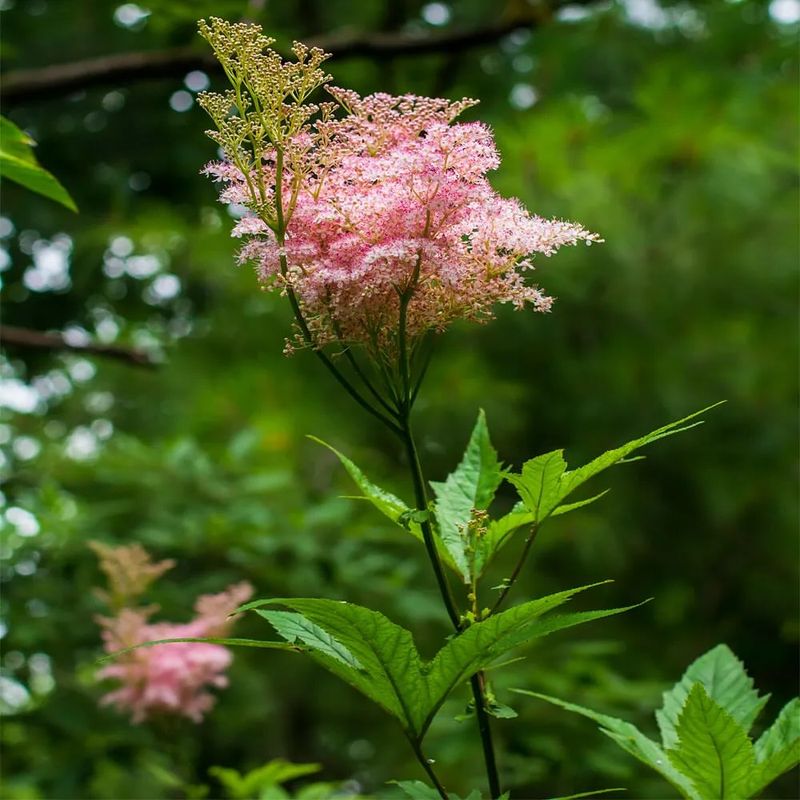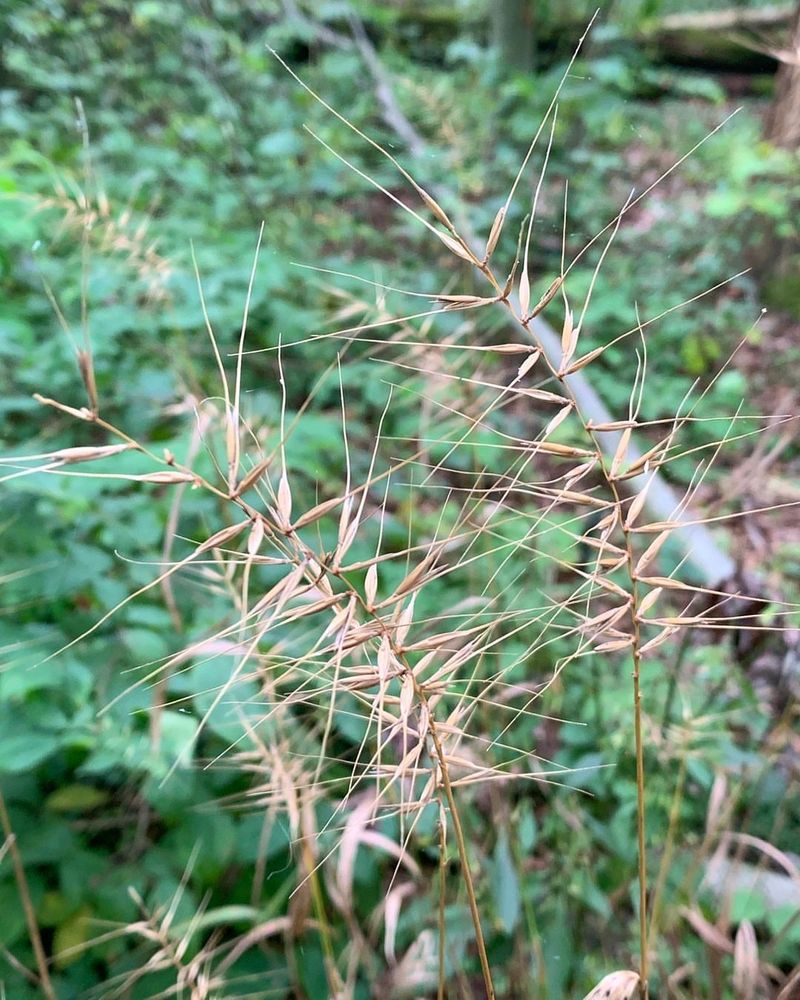Gardening in Ohio’s heavy clay soil can be challenging, but many beautiful native flowers are perfectly adapted to these conditions. These local beauties not only solve the problem of what to plant in stubborn soil but also support local pollinators and wildlife.
With roots evolved to penetrate dense earth, these flowers bring color and life to even the toughest garden spots.
1. Purple Coneflower (Echinacea purpurea)
Standing tall with pink-purple petals surrounding a spiky center, purple coneflower makes a bold statement in Ohio gardens. Its sturdy stems stand strong in clay soil, thriving where other plants may falter.
Used medicinally for centuries by Native Americans, this Ohio native is now prized for attracting butterflies in summer and goldfinches in fall, who feast on its seed heads.
Once established, it’s drought-tolerant and spreads slowly over time—bringing more color, pollinators, and resilience to your garden each year.
2. New England Aster (Symphyotrichum novae-angliae)
Late summer brings the royal purple blooms of New England Aster, painting Ohio gardens when other flowers have faded. Its deep roots break through clay while anchoring the tall stems that reach 3-6 feet.
Monarchs and other butterflies flock to these starry blooms during fall migration. The fuzzy stems and leaves give this plant a distinctive texture in the garden landscape.
Plant it at the back of borders where its height creates a dramatic backdrop.
3. Swamp Milkweed (Asclepias incarnata)
Despite its name, Swamp Milkweed doesn’t need constant wetness – it handles clay soil beautifully. Clusters of small pink flowers appear in summer, releasing a sweet vanilla scent that’s irresistible.
Monarch butterflies depend on this plant for their caterpillars. The seed pods that form after flowering split open dramatically in fall, releasing silky-tailed seeds that float on the breeze.
Growing 3-4 feet tall, this milkweed creates a robust vertical element in garden designs.
4. Cardinal Flower (Lobelia cardinalis)
Brilliant red spikes of Cardinal Flower bring a flash of color that even hummingbirds can’t resist. Few native plants offer such intense scarlet blooms, making this a standout in any garden.
While it enjoys moisture, its adaptable nature means it thrives in Ohio’s clay once established. The dramatic flower stalks rise 2-4 feet above basal foliage, creating architectural interest.
Named for the vibrant red robes of Roman Catholic cardinals, this beauty blooms from July through September.
5. Blazing Star (Liatris spicata)
Resembling purple fireworks frozen in time, Blazing Star sends up tall spikes of fluffy blooms that brighten Ohio gardens from top to bottom—a rare and striking blooming pattern that offers extended visual interest.
This tough Ohio prairie native thrives in clay soil, thanks to its deep, moisture-seeking roots. Butterflies and bees flock to the nectar-rich flowers throughout summer, making it a pollinator favorite.
Beloved by cut flower enthusiasts, Blazing Star also shines in arrangements with its dramatic vertical form and impressive vase life.
6. Wild Bergamot (Monarda fistulosa)
Crown-like lavender blooms top Wild Bergamot stems, creating a regal presence in summer gardens. Also called Bee Balm, this aromatic member of the mint family fills the air with a spicy, oregano-like scent when brushed against.
Hummingbirds dart between the unusual flowers while bees work methodically from bloom to bloom. The gray-green foliage adds soft texture to garden plantings even when not in flower.
Native Americans used this plant medicinally for treating colds and fever.
7. Joe-Pye Weed (Eutrochium purpureum)
Towering at 5-7 feet tall, Joe-Pye Weed creates a majestic backdrop in clay soil gardens. The huge dusty-pink flower clusters can span a foot across, creating a cloud-like effect in late summer.
Vanilla-scented flowers draw in countless butterflies, particularly swallowtails who can’t seem to get enough. Despite its unfortunate common name, this isn’t a weed but a valuable native that once grew in meadows throughout Ohio.
Legend says it was named after a Native American healer who used it medicinally.
8. Blue Flag Iris (Iris versicolor)
Elegant blue-violet blooms of Blue Flag Iris bring springtime drama to clay gardens. Each flower features intricate markings that guide pollinators to nectar, resembling nature’s own runway lights.
Growing from thick rhizomes that spread slowly over time, this iris gradually forms impressive clumps. The sword-shaped leaves remain attractive all season, providing vertical structure even after the flowers fade.
Unlike many garden plants, this native iris actually prefers the heavy, moisture-retentive qualities of clay soil.
9. Foxglove Beardtongue (Penstemon digitalis)
Graceful white trumpets of Foxglove Beardtongue hover above Ohio clay gardens in late spring. The tubular flowers, delicately marked with fine purple lines, seem to float on slender stems above glossy green foliage.
Bumblebees dive headfirst into the blooms, emerging dusted with pollen. After flowering, the seed heads add winter interest and provide food for small birds in Ohio’s colder months.
Tough and adaptable, this native thrives in poor, heavy soils where fussier plants would struggle—making it a perfect fit for Ohio landscapes.
10. Ironweed (Vernonia gigantea)
Aptly named for its tough nature, Ironweed produces deep purple flower clusters atop sturdy stems that can reach an impressive 8 feet tall. The intense color creates a dramatic late-summer statement when many gardens look tired.
Clay soil poses no challenge to this resilient plant with its strong root system. Butterflies, particularly American Painted Ladies, frequently visit the nectar-rich blooms.
The name comes from its rigid stems that stand strong through storms and remain upright even in winter.
11. Great Blue Lobelia (Lobelia siphilitica)
Spikes of intense blue flowers make Great Blue Lobelia a standout in late-summer Ohio gardens, when many landscapes are fading and in need of a color boost. The unique two-lipped blooms open gradually up the stem, keeping the display going for weeks.
Unlike its red cousin, Cardinal Flower, this lobelia offers rare true-blue blooms that draw hummingbirds, who reach it to the tubular flowers for rich nectar.
Well-suited for Ohio’s moisture-retaining clay soils, this native plant thrives where others struggle, adding vibrant color and pollinator appeal to the garden.
12. Black-Eyed Susan (Rudbeckia hirta)
Cheerful yellow daisy-like flowers with distinctive dark centers brighten Ohio gardens from June through September. These sunny blooms seem to smile at the sky, bringing optimism to any garden space.
Short-lived perennials, Black-Eyed Susans self-seed readily in clay soil, creating natural drifts over time. Goldfinches perform acrobatics on the seedheads, hanging upside-down to extract the nutritious seeds.
Native American tribes used this plant medicinally to treat various ailments including colds and earaches.
13. Wild Columbine (Aquilegia canadensis)
Dancing on delicate stems, Wild Columbine’s red and yellow nodding flowers resemble tiny lanterns swaying in spring breezes. The unusual spurred shape evolved specifically to accommodate hummingbird bills.
Surprisingly tough despite its delicate appearance, this native thrives in clay soil, especially in partly shaded locations. The blue-green foliage resembles maidenhair fern, adding textural interest even when not in bloom.
Seeds form in upright pods that split open when ripe, spilling tiny black pearls that will grow into next year’s plants.
14. Culver’s Root (Veronicastrum virginicum)
Candelabra-like white flower spikes of Culver’s Root add architectural beauty to Ohio midsummer gardens. Reaching up to 6 feet tall, the branched flower stems resemble elegant candelabras, each holding dozens of tiny white blooms.
Whorled leaves encircle the upright stems, offering extra texture and visual interest. Bees and butterflies flock to the long-lasting flowers, which bloom throughout July and August in Ohio’s native landscapes.
Early American settlers used the plant medicinally as a cathartic, giving rise to its alternate name: Culver’s physic.
15. Turtlehead (Chelone glabra)
Whimsical white flowers resembling turtle heads with open mouths appear on Turtlehead plants in late summer. The unusual blooms invite closer inspection to appreciate their detailed resemblance to tiny animals.
Clay soil’s moisture-retaining properties suit this plant perfectly. Bumblebees are the primary pollinators, forcing their way into the tightly closed flowers with impressive determination.
The glossy dark green foliage remains attractive throughout the growing season, resisting most pests and diseases.
16. Sneezeweed (Helenium autumnale)
Bringing sunshine to Ohio’s fall gardens, sneezeweed displays yellow daisy-like flowers with distinctively drooping petals surrounding button-like centers. Despite its name, it doesn’t cause sneezing—the name comes from its historical use as snuff.
Growing 3–5 feet tall, it forms clumps that spread gradually in Ohio’s clay soils. Butterflies and bees flock to the blooms in September and October, when nectar sources are scarce.
The unusual drooping ray petals give this native flower a windswept, dynamic appearance—even on calm autumn days.
17. Ohio Spiderwort (Tradescantia ohiensis)
Morning brings the vibrant blue-purple flowers of Ohio Spiderwort, which close by afternoon in summer heat. Each bloom lasts just one day, but plants produce new flowers daily for weeks.
Grass-like foliage forms attractive clumps that handle clay soil with ease. When stems are broken, they release a sticky white sap that forms thread-like strands, giving the plant its spider-inspired name.
Native Americans used various parts of this plant medicinally and as food, particularly the young shoots prepared like asparagus.
18. Obedient Plant (Physostegia virginiana)
Rows of pink snapdragon-like flowers line the stems of Obedient Plant, creating a stunning vertical display in late summer. The curious name comes from the flowers’ tendency to stay in position when pushed to one side – a fun garden trick to show children.
Clay soil doesn’t intimidate this vigorous native, which can spread enthusiastically in ideal conditions. Hummingbirds and bumblebees visit the tubular blooms, which provide nectar when many other plants have finished flowering.
The square stems reveal its membership in the mint family.
19. Queen-of-the-Prairie (Filipendula rubra)
Clouds of cotton-candy pink flowers float above Queen-of-the-Prairie plants in early summer. The feathery flower clusters can span up to 9 inches across, creating a dramatic effect in the garden.
Reaching 6-8 feet tall, this majestic native commands attention even in difficult clay soil. The deeply lobed leaves add textural interest throughout the growing season.
Once common in Ohio’s wet meadows, this increasingly rare beauty deserves a place in modern gardens where it attracts numerous beneficial insects.
20. Bottlebrush Grass (Elymus hystrix)
Resembling its namesake cleaning tool, Bottlebrush Grass produces distinctive seed heads that add architectural interest to clay soil gardens. The unusual perpendicular arrangement of the seeds creates a striking silhouette, especially when backlit.
This cool-season grass greens up early in spring, providing structure before other plants emerge. Birds appreciate the seeds in fall and winter, while the plant’s deep roots help improve clay soil structure over time.
Growing in attractive fountain-like clumps, it reaches 3-5 feet tall.



